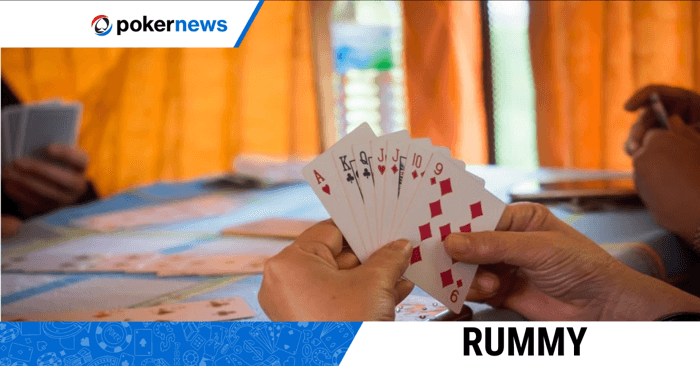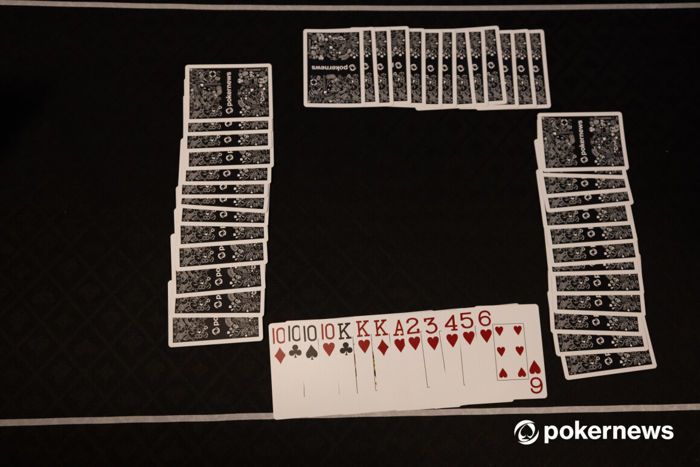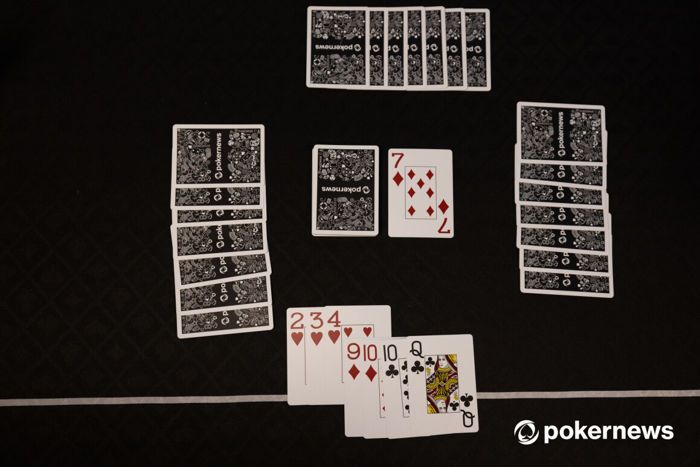Shanghai Rummy - Rules, How to Play and Winning Strategy

Shanghai Rummy is a special kind of Rummy game that stands out because it's different from other variants. It has its own set of rules and way of playing that make it unique.
People enjoy playing Shanghai Rummy because it's not only fun but also requires thinking and planning. The game brings a new and exciting twist to the traditional Rummy experience, making it engaging for everyone who loves rummy card games.
Rules of Shanghai Rummy
Shanghai Rummy follows a set of rules that structure the gameplay for an exciting card game experience. Here's a breakdown:
- Objective: The main goal is to accumulate the fewest points by forming specific card combinations in each round.
- Deck and Players: A standard 52-card deck is used. The game is typically played with 3 to 5 players.
- Card Values: Number cards (2-10) have their face value. Face cards (Jack, Queen, King) are worth 10 points. Aces can be either 1 or 11 points, at the player's discretion.
Understanding the Multi-Round Format, Card Dealing, Melding, and Gameplay Dynamics
- Multi-Round Format: Shanghai Rummy is organized into rounds, each with its own unique challenges and objectives. The number of cards dealt to each player decreases by one in subsequent rounds.
- Card Dealing: At the beginning of each round, players are dealt a specific number of cards, starting with 10 in the first round. The dealing pattern changes as the rounds progress.
- Melding: Players can lay down combinations of sets (three or four cards of the same rank) and runs (consecutive cards of the same suit) during their turns. This move is called melding and contributes to completing phases.
- Gameplay Dynamics: Interaction among players influences the flow of the game. Players must adapt their strategies based on the evolving situation, creating a dynamic and engaging gameplay experience.
Overview of Scoring Variations and the Significance of Completing Phases
- Scoring Variations: Scoring is based on the cards left in a player's hand at the end of a round.
- Face cards and Aces carry higher point values than number cards.
- Completing Phases: Each round consists of different phases, requiring specific combinations of sets and runs to be laid down. Successfully completing these phases is essential for minimizing points and progressing in the game.
Winning Strategy for Shanghai Rummy
Achieving victory in Shanghai Rummy requires a thoughtful approach and strategic finesse. Here's a comprehensive guide to mastering the game and maximizing your chances of success.

Tactics for Achieving Victory
- Phased Planning: Understand the specific requirements of each phase. Plan your moves with a focus on completing these phases efficiently, paving the way for overall success.
- Observation and Adaptation: Pay close attention to the cards played by opponents. Adapt your strategy based on their moves and adjust your game plan to stay ahead of the competition.
- Balanced Melding: Strive for a balanced melding approach. Don't exhaust all your high-value cards in one go; instead, strategically meld sets and runs to maintain flexibility for adapting to changing game dynamics.
Adapting Strategies to the Multi-Phase Structure and Evolving Game Dynamics
- Long-Term Vision: Embrace a long-term perspective. Understand that Shanghai Rummy unfolds across multiple phases, and success in one round sets the stage for subsequent victories.
- Flexibility in Approach: Be flexible in your strategies. The multi-phase structure requires players to adapt continually. Embrace versatility in melding and be open to adjusting your game plan based on the evolving circumstances.
- Risk Assessment: Assess the risk and reward of each move. While taking bold steps can be rewarding, consider the potential consequences. Calculate the impact on your points and weigh the risks before committing to a play.
Maximizing Points through Efficient Card Management, Melding, and Strategic Plays
- Card Management: Efficiently manage your cards to minimize point accumulation. Discard high-value cards strategically and keep an eye on the overall distribution of cards in play.
- Timely Melding: Meld cards strategically to maximize points and progress through phases swiftly. Timing is crucial – striking the right balance between holding and melding ensures an optimal strategy.
- Strategic Plays Across Phases: Develop an overarching strategy that spans across phases. Consider the broader implications of your moves and aim for consistency in your approach to build a winning momentum.
Where to Play Rummy for Real Money
Why Shanghai Rummy is Enjoyable to Play
One of the main reasons people find enjoyment in Shanghai Rummy is the need for strategic thinking. Unlike games purely based on luck, this one requires players to use their brains, contemplate their moves, and plan ahead. This element adds a layer of fun, especially for those who appreciate a bit of mental challenge in their games.
Shanghai Rummy keeps the excitement alive by introducing variety in each round. It's akin to sampling different flavors of ice cream – you're in for a surprise each time you play. The game's ability to change slightly in every round ensures that it remains entertaining and not overly predictable, contributing to the overall enjoyment.

Beyond the cards, Shanghai Rummy fosters a social and competitive atmosphere, making it a delightful experience. Playing with friends feels like being part of a team while also trying to outsmart each other. The blend of camaraderie and a friendly competitive spirit enhances the overall enjoyment, turning a simple card game into a social event.
- How to Play Rummy
- Exploring Free Rummy
- Where to Play Rummy for Real Money
- Mastering Rummy Strategy
- How to Keep Score in Rummy
FAQs - Shanghai Rummy
How does the multi-phase structure in Shanghai Rummy impact the overall strategy, and are there specific tactics for each phase?
The multi-phase structure in Shanghai Rummy significantly influences the overall strategy. Each phase introduces specific objectives, requiring players to adapt their tactics accordingly. In the early phases, focus on building foundational melds, while later phases may demand a more aggressive approach to complete objectives quickly. Tactics evolve to align with the unique challenges presented in each phase.
Can players customize the rules of Shanghai Rummy, or is there a standardized set of regulations?
Shanghai Rummy allows a degree of rule customization, offering players the flexibility to establish house rules or variations. While there is a standardized set of regulations providing a common framework, the game accommodates adjustments based on player preferences, contributing to a personalized gaming experience.
What happens if a player completes phases quickly but struggles in the final phase in Shanghai Rummy?
Completing phases quickly showcases efficiency, but struggling in the final phase can have repercussions. Shanghai Rummy emphasizes consistency across all phases, and difficulties in the final phase may impact the overall outcome. Players should strike a balance between speed and strategic planning to ensure success throughout the entire game.
Are there specific strategies for adapting to varying card distributions in Shanghai Rummy, especially in different phases?
Adapting to varying card distributions is crucial in Shanghai Rummy. Players develop strategies for optimizing melds based on specific phase requirements. Flexibility is key, and successful adaptation to different card distributions involves strategic planning and the ability to modify tactics based on the evolving needs of each phase.
How does the social dynamic change in Shanghai Rummy as players interact over multiple phases, and does it impact the strategy?
The social dynamic in Shanghai Rummy evolves as players interact over multiple phases. Extended gameplay fosters deeper camaraderie and competition. Social interactions, negotiations, and strategic discussions become cumulative experiences, influencing overall strategy. The evolving social dynamic adds an extra layer of enjoyment, making Shanghai Rummy a rich and engaging card-playing experience.
